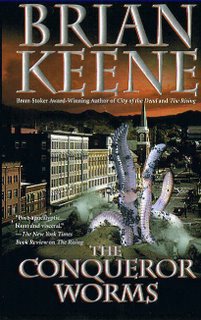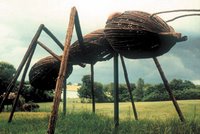Realism and giant monsters
Stephen Bissette argues against criticisms of the realism of the new King Kong by pointing out all the absurdities of the classic Kong. He asks why people aren't willing to accept the handwaving of the new film when they buy it from the classic? He essentially says, if I understand correctly, that there is a basic absurdity to the films that one must accept to enjoy the tale being offered, and if you're not willing to accept those absurdities in the first place, why bother going to see it?
This got me thinking about giant monster movies, and something that is very basic to all of them. The absurdity is the main reason we come out to see it. Once the giant monster has entered the scene, what can't happen? Once our disbelief has been that far suspended, why not hang it higher?
The pleasure of giant monster movies then, as I see it, is waiting to see what absurdity the movie brings along. The movie world is wide open to go anywhere after a giant monster enters the scene. This, I think, is why I enjoy Godzilla films so much; they take that absurdity and run with it, no worries of realism to bog them down.
Once Godzilla is on the scene, why not more monsters? Why not make monsters talk? Why not make a two legged beast fly with its tail between its legs? Why not make a monster out of sludge? Why not have a giant cyborg monster be controlled by roach-like aliens who own a children's theme park? Why not have a weapon that shoots mini-black holes?
And this is why the Heisei series of Godzilla films seems so dour now. They aimed for a higher level of realism. And that aim only served to bog the films down. The most enjoyable of those films was Biollante, which featured a giant rose monster that may have the soul of a little girl bomb victim trapped inside it.
It seems to me, the enjoyment of giant monster movies is all about the joy of unfettered imagination. And what could be better than that?









